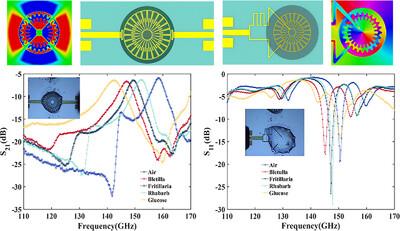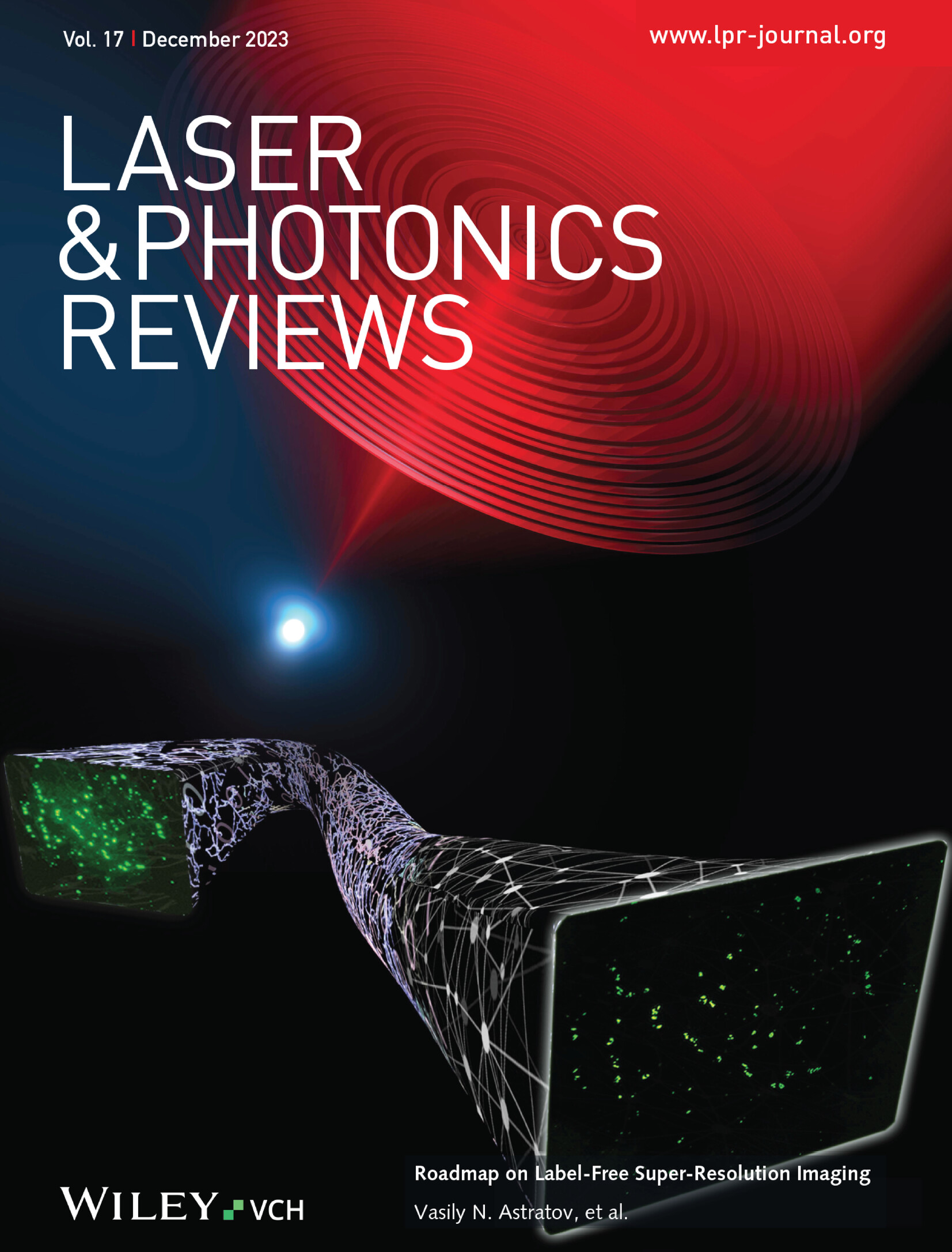Terahertz GaAs Indicator Chip Based on High-Q-Factor Spoof Localized Surface Plasmons Resonator
IF 9.8
1区 物理与天体物理
Q1 OPTICS
引用次数: 0
Abstract
Spoof localized surface plasmons (spoof LSPs, SLSPs) have recently emerged as high-quality-factor (Q-factor) multipole electromagnetic resonant structures, showcasing considerable promise in the field of sensing. However, sensing in the terahertz band presents notable challenges. Here, a dual-port coupled SLSPs resonator and a single-port coupled SLSPs resonator are proposed with phase separated excitation, both exhibiting high-Q-factors in the terahertz band. The dual-port coupled SLSPs can sustain both odd resonance mode and even resonance mode, whereas the single-port coupled SLSPs can generate vortex wave resonance modes and asymmetric modes. In the measurement, the highest Q value of the dual-port resonator is 69 at the frequency of 179.4 GHz. Equally noteworthy is the single-port resonator, which reaches a groundbreaking Q-factor of 405.4 at the frequency of 150 GHz, marking a significant advancement in the Q-factors of passive devices. Biosensing for Bletilla, Fritillaria, Rhubarb, and glucose in the terahertz band is implemented, with the maximum frequency shift of 15.8 GHz for the dual-port coupled SLSPs and 7.8 GHz for the single-port coupled SLSPs. The maximum sensing figures of merits (FoM) are 4.1 and 12.9RIU−1 for the dual- and single-port resonators, respectively, underscoring substantial potentials of this work in the realm of terahertz sensing.

求助全文
约1分钟内获得全文
求助全文
来源期刊
CiteScore
14.20
自引率
5.50%
发文量
314
审稿时长
2 months
期刊介绍:
Laser & Photonics Reviews is a reputable journal that publishes high-quality Reviews, original Research Articles, and Perspectives in the field of photonics and optics. It covers both theoretical and experimental aspects, including recent groundbreaking research, specific advancements, and innovative applications.
As evidence of its impact and recognition, Laser & Photonics Reviews boasts a remarkable 2022 Impact Factor of 11.0, according to the Journal Citation Reports from Clarivate Analytics (2023). Moreover, it holds impressive rankings in the InCites Journal Citation Reports: in 2021, it was ranked 6th out of 101 in the field of Optics, 15th out of 161 in Applied Physics, and 12th out of 69 in Condensed Matter Physics.
The journal uses the ISSN numbers 1863-8880 for print and 1863-8899 for online publications.

 求助内容:
求助内容: 应助结果提醒方式:
应助结果提醒方式:


